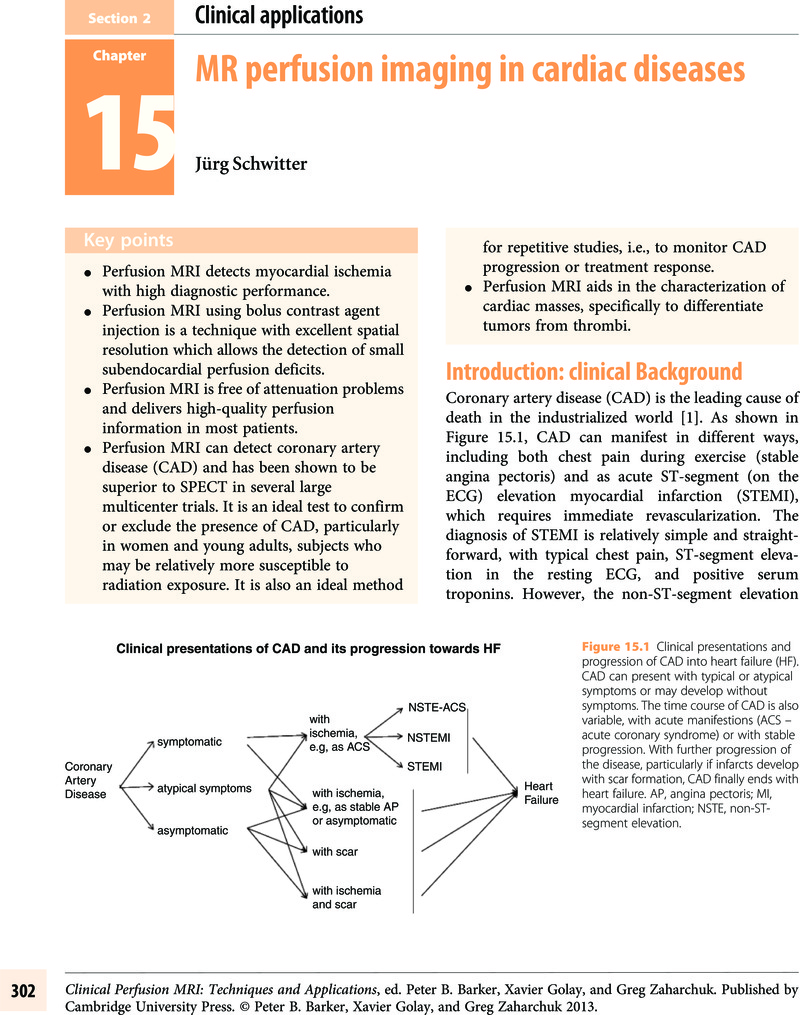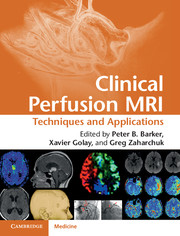Book contents
- Frontmatter
- Contents
- List of Contributors
- Foreword
- Preface
- List of Abbreviations
- Section 1 Techniques
- Section 2 Clinical applications
- 8 MR perfusion imaging in neurovascular disease
- 9 MR perfusion imaging in neurodegenerative disease
- 10 MR perfusion imaging in clinical neuroradiology
- 11 MR perfusion imaging in oncology: neuro applications
- 12 MR perfusion imaging in oncology: applications outside the brain
- 13 MR perfusion imaging in breast cancer
- 14 MR perfusion imaging in the body: kidney, liver, and lung
- 15 MR perfusion imaging in cardiac diseases
- 16 MR perfusion imaging in pediatrics
- Index
- References
15 - MR perfusion imaging in cardiac diseases
from Section 2 - Clinical applications
Published online by Cambridge University Press: 05 May 2013
- Frontmatter
- Contents
- List of Contributors
- Foreword
- Preface
- List of Abbreviations
- Section 1 Techniques
- Section 2 Clinical applications
- 8 MR perfusion imaging in neurovascular disease
- 9 MR perfusion imaging in neurodegenerative disease
- 10 MR perfusion imaging in clinical neuroradiology
- 11 MR perfusion imaging in oncology: neuro applications
- 12 MR perfusion imaging in oncology: applications outside the brain
- 13 MR perfusion imaging in breast cancer
- 14 MR perfusion imaging in the body: kidney, liver, and lung
- 15 MR perfusion imaging in cardiac diseases
- 16 MR perfusion imaging in pediatrics
- Index
- References
Summary

- Type
- Chapter
- Information
- Clinical Perfusion MRITechniques and Applications, pp. 302 - 325Publisher: Cambridge University PressPrint publication year: 2013



